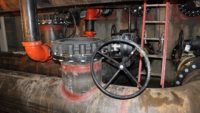In the past two years, the PVF sector has faced a multitude of challenges, that, when combined, created what some call the perfect storm. Concerns among plumbing professionals included supply chain shortages and trade disruption, material price increases, freight inflation, fleet shortages and more.
While 2023 is a new year, most of these concerns are still valid in today’s uncertain market. Over the past year, the U.S. experienced inflation climbing at the fastest pace in 40 years across many sectors of the economy, driven in part by higher energy prices. The consumer price index reached a whopping 9.1% in June per the Bureau of Labor Statistics. The last time inflation reached over 9% was November 1981, according to The Washington Post.
According to Deloitte’s 2023 Engineering and Construction Industry Outlook, the slowing economy is already having an impact on construction activity and new work scheduled. As we look ahead into 2023, current market dynamics suggest that different industry segments will experience differentiated growth rates. The report blames rising interest rates for declining construction activity, but points out that the nonresidential segment is likely to be buoyed by funds from the Infrastructure Investment and Jobs Act (IIJA) and the CHIPS and Science Act of 2022.
However, according to a few industry experts, the sector is in decent shape overall, and there is reason to be optimistic heading into 2023.
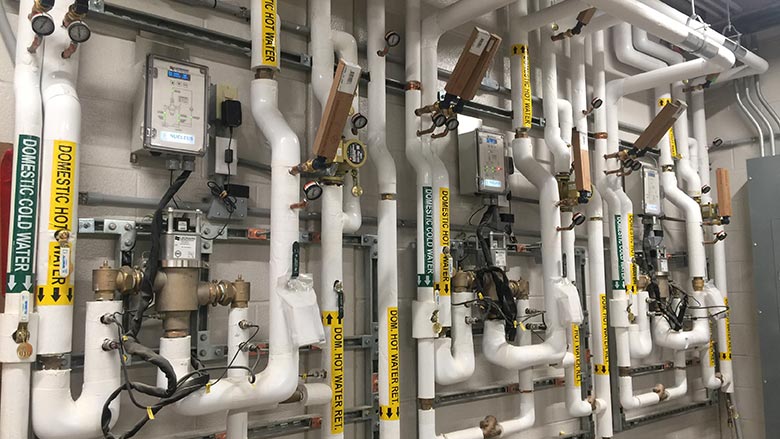 Crown Point YMCA in Northwest Indiana boasts a Leonard Valve NV-200-2PCS Nucleus digital valve, capable of a flow of up to 451 gallons per minute.
Crown Point YMCA in Northwest Indiana boasts a Leonard Valve NV-200-2PCS Nucleus digital valve, capable of a flow of up to 451 gallons per minute.
“Like most markets, the PVF Market continues to show signs of instability, and, at times, yo-yos to find positive, stable, forward momentum in the wake of the COVID-19 pandemic,” said Rick Cota, vice president and director of technical services at Leonard Valve. “Having said that, if manufacturers can keep a sharp focus on managing supply chain issues and providing products with reasonable lead times, and, in turn, those products feature time and labor savings to the customer or end-user, there are pockets of tremendous growth to be had. The global labor shortage continues to permeate the air, but the products can combat the shortage by providing proactive-rich feature sets that save time and allow remote access to real-time data for end-users, creating a win for all.”
Christopher Mason, vice president of supply chain services at NIBCO, agrees, noting the PVF market shows signs of continued growth, particularly in select segments such as data centers, telecommunications, semiconductor manufacturing facilities, as well as electric vehicle and battery manufacturing expansion and health care.
“Many of these projects have multi-year construction cycles and will require continued support from start to finish, as well as future maintenance needs,” he says.
According to Dean Taylor, executive vice president of sales, ASC Engineered Solutions, this year will remain much like what we saw in 2022.
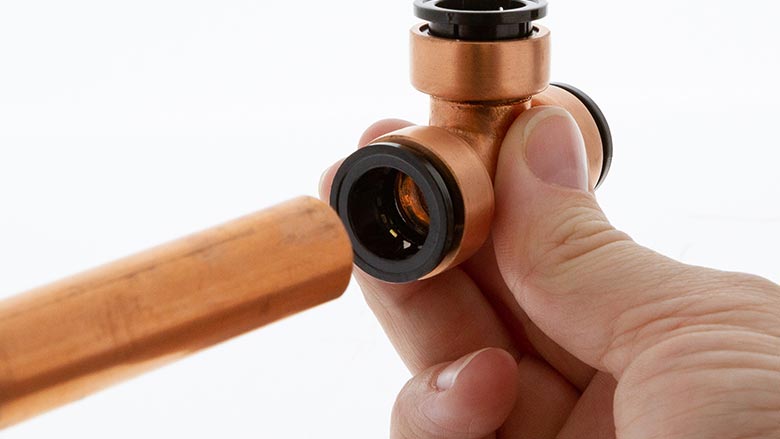 NIBCO’s Wrot Racer fast push fittings allow for easy transition between piping systems by connecting PEX, PE-RT, CPVC or copper tubing.
NIBCO’s Wrot Racer fast push fittings allow for easy transition between piping systems by connecting PEX, PE-RT, CPVC or copper tubing.
“Commercial PVF has and will continue to be dominated by very large projects like data centers, hospitals, warehousing, renovations of current buildings, and upward trends in multi-family,” he says. “Warehousing for our markets will trend down after Q1; the other areas noted will grow in 2023. We are hopeful, overall, for a year similar to 2022.”
Despite the optimism for the coming year, the uncertainty does remain.
“For our products, we depend largely on the health of commercial and residential construction markets,” says Brad Muller, vice president of marketing for Charlotte Pipe and Foundry Co. “The Fed tightening since early in the year has caused mortgage rates to skyrocket from roughly 3% at the end of 2021 to as high as 7%. This sharp increase in borrowing costs has crushed affordability for prospective buyers. Existing home sales, new home sales, builder sentiment and housing starts have all collapsed from the elevated levels seen in 2021. As such, we expect single-family housing starts to drop nearly 10% next year, and multifamily starts will soften modestly as well. Elevated interest rates and weak economic growth are also putting a damper on commercial property development. Recession fears have added an extra layer of uncertainty to the office market recovery, which remains on shaky ground following the pandemic-induced rise of hybrid work models. The exception will be the warehouse sector, which is in high-demand with the steady rise in e-commerce.”
Connected, simplified products in demand
According to Aaron Stotko, director of segment marketing at Uponor, there is a continued demand for prefab and kitting solutions that add greater efficiencies and consistencies to projects.
“These services are providing significant labor and material cost savings for contractors, and we anticipate this trend is going to continue well into the next decade,” he says. “We’re also continuing to see more commercial projects switch from metals to polymers for piping systems, and this is due to the installation efficiencies and system longevity that polymer piping systems, such as PEX and PP-RCT, provide. With PEX in sizes up to 3 inches and PP-RCT in sizes up to 12 inches, we anticipate the polymer piping trend will continue to grow as more projects incorporate these products for mechanical and domestic water applications.”
The biggest drivers to these above-mentioned trends are the skilled labor shortage and the demand to create more sustainable buildings, Stotko adds.
“The need for efficient, effective systems that are cost-effective and reliable is paramount in commercial buildings, and polymer piping systems check all those requirements,” he says. “Polymer piping systems are more durable than metals for a longer system life, they are lighter in weight and much easier for workers to learn and install, they offer a more-stable material cost that does not fluctuate with market changes, and they eliminate the dangers of open flame and chemicals on the job site.”
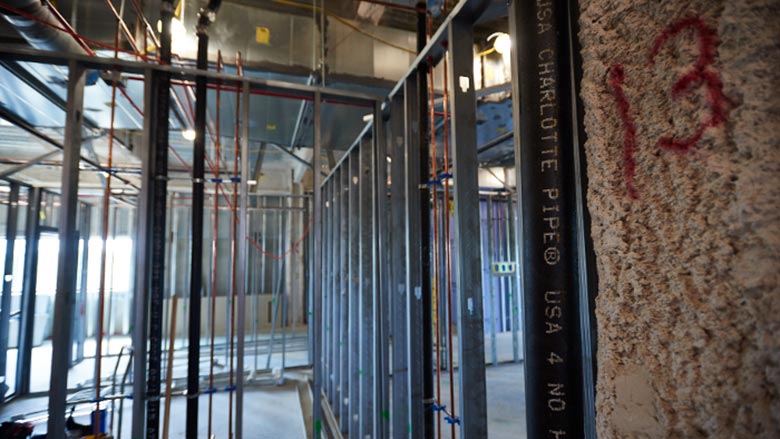 According to Charlotte Pipe’s Brad Muller, there is an ongoing consolidation across the industry — from both manufacturers and wholesale distributors. Size and scale make it easier to service customers, and, therefore, many companies are in acquisition mode to ensure growth.
According to Charlotte Pipe’s Brad Muller, there is an ongoing consolidation across the industry — from both manufacturers and wholesale distributors. Size and scale make it easier to service customers, and, therefore, many companies are in acquisition mode to ensure growth.
Cota points to connected products as being the largest trend dominating the PVF sector.
“Without a doubt, connected products are No. 1 on everyone’s mind,” he says. “If we can see the output of the product on a remote screen, from anywhere in the world, and have the ability to make remote adjustments to that product, we have remote notification, instant feedback and proactive control. For us, as a 113-year-old valve manufacturer, the game has completely changed. Conventional technologies forced end-users to be reactive only, and some problems lingered for long periods of time without firm resolution. The new, fully digital, connected products allow instant, real-time data analysis with a complete shift from reactive to proactive management and control. This provides tremendous labor and time savings to facility managers, potentially saving tremendous costs over the life of the products.”
Taylor points to the skilled labor shortage as one of the largest market disruptors, and because of it, the PVF sector is focusing on ease of installation. “We are seeing continued momentum in alternative joining of piping and valves to the ease of installation. We will continue our focus on having these products for the market.”
According to Mason, there are several trends influencing the PVF sector, including sustainable, energy-efficient system designs, products that incorporate multiple features into a single solution and the continued adoption and growth of press and push connection technologies in fittings and valves being used across multiple applications.
“These trends are being driven by rising energy costs, the need for future system serviceability and the limited availability of skilled labor,” he notes.
Navigating challenges
While the second half of 2022 saw a “softening” of the supply chain constraints, we’re not out of the woods yet.
“All the experts expect instability in the supply chain to exist at least through the summer of 2023,” Cota says. “We have seen a ‘relative softening’ in the issues, but there are still geographical pockets that continue to be a problem. We feel that things will get better over time and look toward the end of 2023 to put this behind us.”
Cota describes the supply chain as a constant daily struggle, with coordinated efforts between purchasing, inventory control and suppliers making concerted efforts to keep hands on the pulse and communication lines open to keep inventory on the shelf.
“Companywide, departments that were never previously involved have jumped in to help find alternates and qualify other suppliers as viable options and solutions,” he explains. “Now, more than ever, it takes an army of people working together to manage this situation. Our position is that if you have the product on the shelf, you have an advantage over others who do not in order to gain valuable share in these uncertain times.”
Mason notes that in general, overall lead times continue to be longer than pre-COVID as global supply chains realign to the “new normal.”
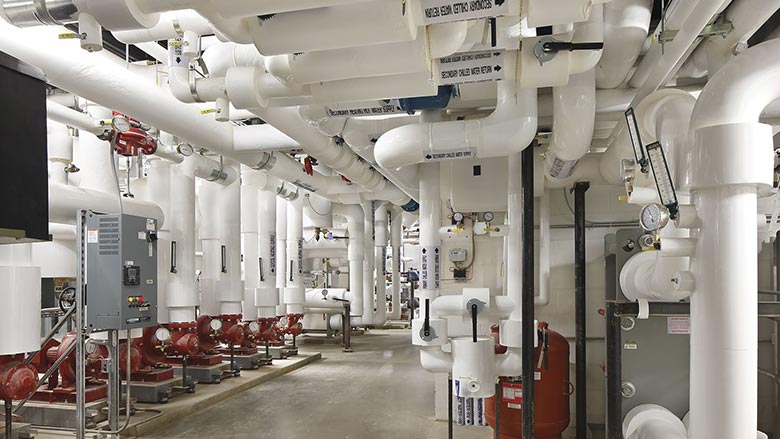 The University of Iowa Visual Arts Building utilizes heat recovery chillers to provide hot water for heating and chilled water for cooling the thermally activated slab. These chillers extract heat from the campus chilled water system, which is distributed and used to heat the VAB. The chilled water is, in turn, either used in the VAB or returned to the campus chilled water loop, which allows it to be used in other buildings.
The University of Iowa Visual Arts Building utilizes heat recovery chillers to provide hot water for heating and chilled water for cooling the thermally activated slab. These chillers extract heat from the campus chilled water system, which is distributed and used to heat the VAB. The chilled water is, in turn, either used in the VAB or returned to the campus chilled water loop, which allows it to be used in other buildings.
“While some raw material costs are off their recent highs, other costs such as staffing, energy and inland freight continue to be at historically high levels,” he explains. “At NIBCO, we’ve made significant investments in manufacturing and distribution productivity enhancements enabling us to adapt to the ever-changing environment. We evaluate and adjust our inventory levels to closely follow demand cycles and plan using a proactive versus reactive approach. We listen to and engage with our customers and suppliers to better understand and balance both the needs and capabilities of our business network.”
Stotko agrees that the current market outlook indicates both rising material costs and inflation will continue to be a factor through the next year.
“To help professionals in the commercial construction industry manage this challenge, we are offering solutions to increase efficiencies, such as design services, kitting options and prefabrication capabilities to keep projects as streamlined as possible,” he notes. “These solutions will help customers ensure order optimization, reduce job-site waste and deliver greater installation efficiencies to help offset the burden of rising material costs and inflation.”
Taylor points to the war in Ukraine as to why these headwinds continue to be an issue two years post-pandemic. “We did not expect either of these things to continue for so long in 2022, but then a war changed that theory. We are seeing relief on the material shortages and some commodity pricing is starting to trend down. Still, with higher labor and energy costs, I believe prices will remain higher than historic trends.”
Taylor notes that ASC Engineered Solutions has “multiple sources in place now for any purchased parts, and have invested heavily in domestic manufacturing equipment to be able to mitigate these problems if they happen in the future.”
Charlotte Pipe is one manufacturer not worried about supply chain shortages in 2023, as Muller says they are not a concern. “The issues we faced in accessing adequate supplies of raw materials in 2020 and 2021 were largely COVID-19 and weather-related. Barring an exceptionally active hurricane season in 2023 impacting the Gulf of Mexico (where most U.S. PVC resin and other feedstocks are produced), we don’t expect supply disruptions to be a factor.
“We forward-buy plenty of raw materials and other production inputs and we carry abundant inventory so we can smooth out peaks and valleys in availability and demand,” Muller adds.
There are also a number of ways design and specifying engineers can help mitigate long lead times for products.
Cota recommends that engineers focus on procurement of the more standard items in the product offerings. “They need to be flexible and willing to modify/build/construct their own variations in the field to satisfy the customer base. This will keep the core products available and flowing, and allow flexibility to provide alternate solutions in the field.”
Mason suggests engineers should engage with their supply partners as early as possible. “The more we know about your future planned projects and related product requirements, the greater visibility we have to plan, prepare and support your needs.”
“You still need to plan and work with your distributor partners early on projects, in order to make sure you have product on time for your installation needs,” Taylor adds.


